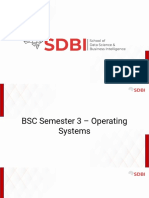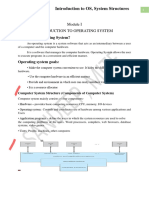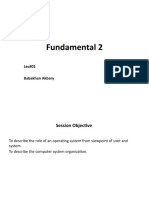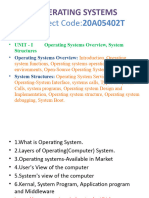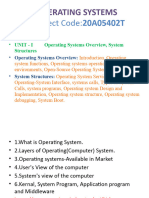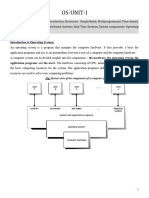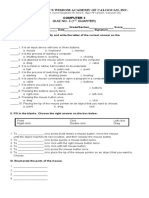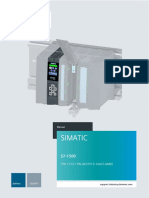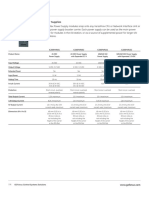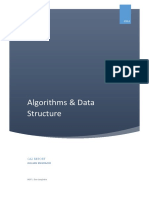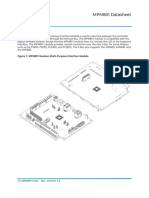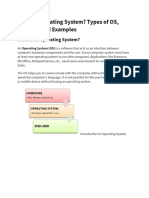0% found this document useful (0 votes)
22 views54 pagesFunctions and Types of Operating Systems
What operating systems do,
Computer System Organization,
Operating system operations – Process Management, Memory Management, Storage Management, I/O Systems, Protection & Security,
Types of Operating Systems – Batch O.S., Multi programmed O.S., Time Sharing O.S., Distributed O.S., Virtualization, Real Time Embedded Systems, Open source O.S.,
System calls & Overview on Types of System calls.
Uploaded by
veda.23bce7240Copyright
© © All Rights Reserved
We take content rights seriously. If you suspect this is your content, claim it here.
Available Formats
Download as PPTX, PDF, TXT or read online on Scribd
0% found this document useful (0 votes)
22 views54 pagesFunctions and Types of Operating Systems
What operating systems do,
Computer System Organization,
Operating system operations – Process Management, Memory Management, Storage Management, I/O Systems, Protection & Security,
Types of Operating Systems – Batch O.S., Multi programmed O.S., Time Sharing O.S., Distributed O.S., Virtualization, Real Time Embedded Systems, Open source O.S.,
System calls & Overview on Types of System calls.
Uploaded by
veda.23bce7240Copyright
© © All Rights Reserved
We take content rights seriously. If you suspect this is your content, claim it here.
Available Formats
Download as PPTX, PDF, TXT or read online on Scribd
/ 54





